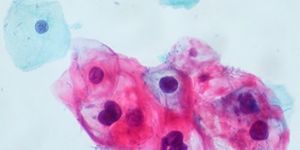
A major problem in today's medicine is the issue of "superbugs" or antibiotic resistant strains of many diseases. While pharmaceutical companies continue to develop new and better antibiotics, there is another avenue being explored. Scientists are now looking closer at compounds within nature to see how they interact with known pathogens and the results are promising.
Scientists at the Institute of Pharmaceutical Sciences at ETH Zurich are using high tech computer models, chemical databases and mathematical algorithms to sort and hopefully analyze complex substances found in nature.
While many modern drugs have their origins in natural active agents, it isn't always clear exactly how these substances work. Researchers have now developed a computer model and analysis protocol that might shed some light on the process.
"Natural active agents are usually very large molecules that often can be synthesized only through very laborious processes," says Gisbert Schneider, a professor of computer-aided drug design at the Institute of Pharmaceutical Sciences at ETH Zurich. With the software breaking the substances down into the individual building blocks that make up the whole, it's much easier to analyze.
Before the aid of computers, finding out how an active agent works would be a long process of complicated laboratory tests. Schneider's team hopes to find a better way. Through the use of an algorithm, the software initially takes a substance found in nature, usually a very complex combination of several different kinds of molecules, and breaks it down into smaller parts.
This analysis, called retrosynthetic analysis, has been used in organic chemistry for years. Before a substance can be used in medical applications, it must first be synthesized in order to target the molecules needed for action. Once scientists know which molecules cause which actions, they can then create much simpler compounds for use in medicines.
There was one particular chemical compound that researchers were anxious to know more about. Within myxobacteria there is a substance called archizolid A. It has long been know that this substance has anti-tumor capabilities and while scientists knew how to target these molecules, that wasn't the whole picture. There was evidence that other cellular factors were at work. By using the computer model, Schneider's team discovered that archizolid A was very similar to a less molecularly complex substance, arachidonic acid, an unsaturated fatty acid. The mechanism of this acid was then confirmed in laboratory tests and could be the inspiration for newer and more effective tumor fighting drugs.
With the computer models cranking out and predicting possible interactions of complex substances, the long process of elimination though months and months of lab tests is greatly reduced. Scientists can now use this algorithm to more quickly focus on which molecules to target for synthesis.
"The analysis is not yet perfect. We were unable to confirm several of the suggested interactions in biochemical experiments," Schneider admits. However, the algorithm is hugely helpful in sifting through thousands of possible interactions in a matter of minutes so that researchers can zero in on positive findings quicker, hopefully resulting in better medicines being available to combat drug resistant strains of bacteria.
 A major problem in today's medicine is the issue of "superbugs" or antibiotic resistant strains of many diseases. While pharmaceutical companies continue to develop new and better antibiotics, there is another avenue being explored. Scientists are now looking closer at compounds within nature to see how they interact with known pathogens and the results are promising.
A major problem in today's medicine is the issue of "superbugs" or antibiotic resistant strains of many diseases. While pharmaceutical companies continue to develop new and better antibiotics, there is another avenue being explored. Scientists are now looking closer at compounds within nature to see how they interact with known pathogens and the results are promising.







